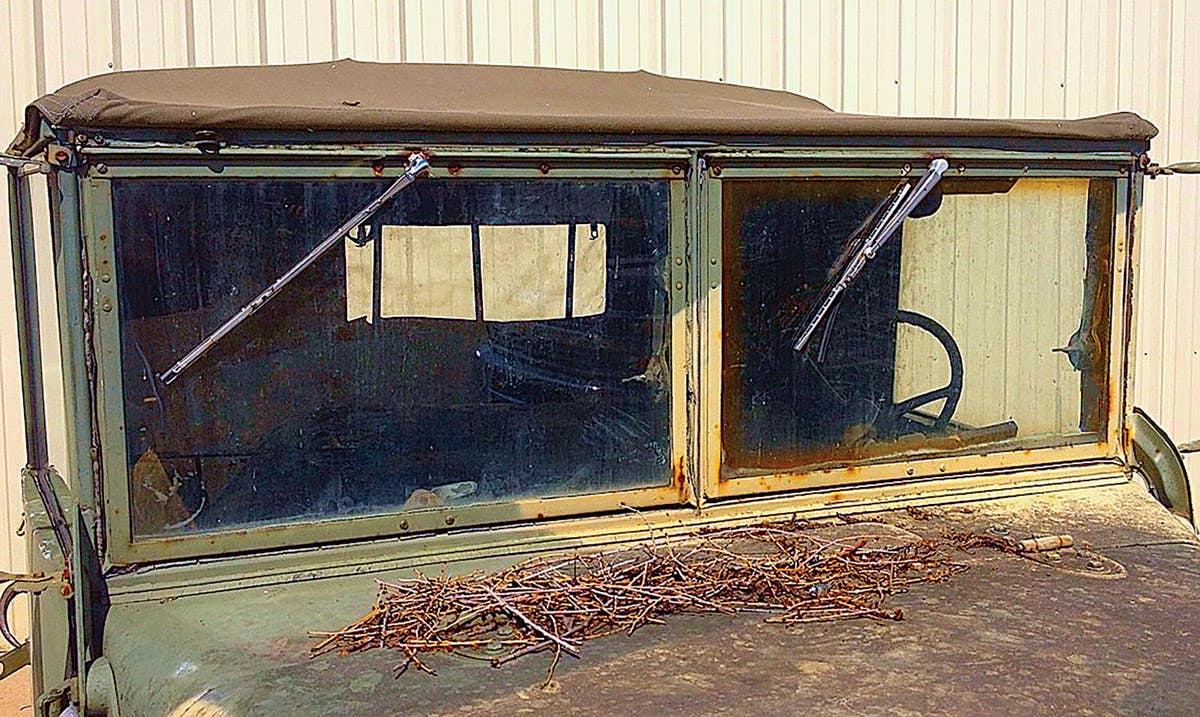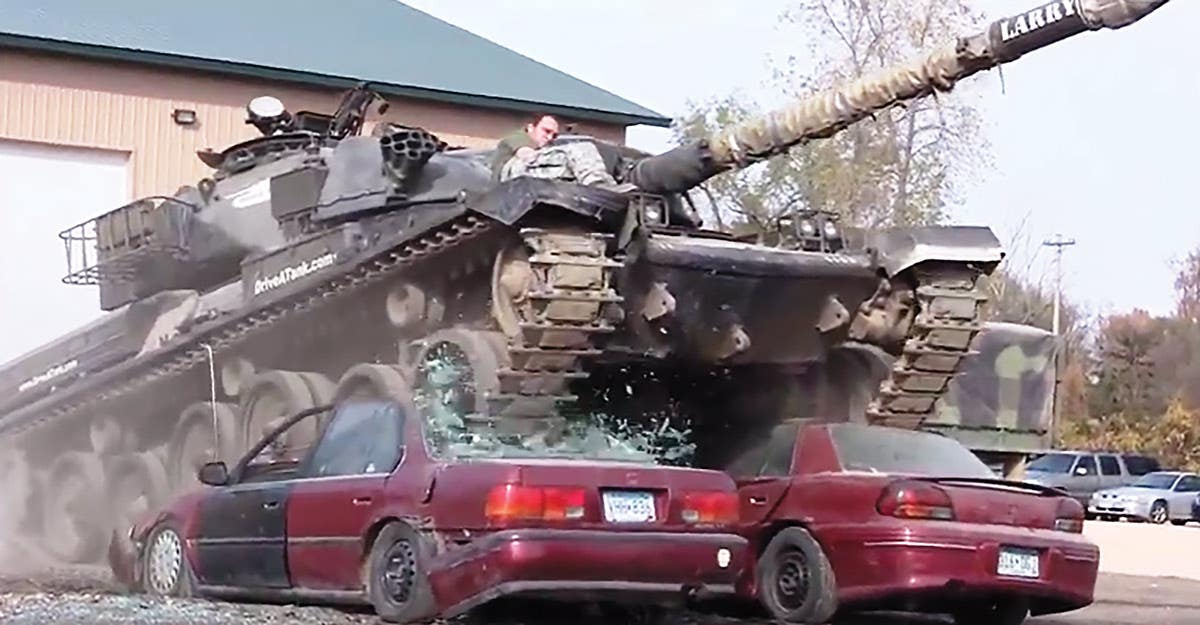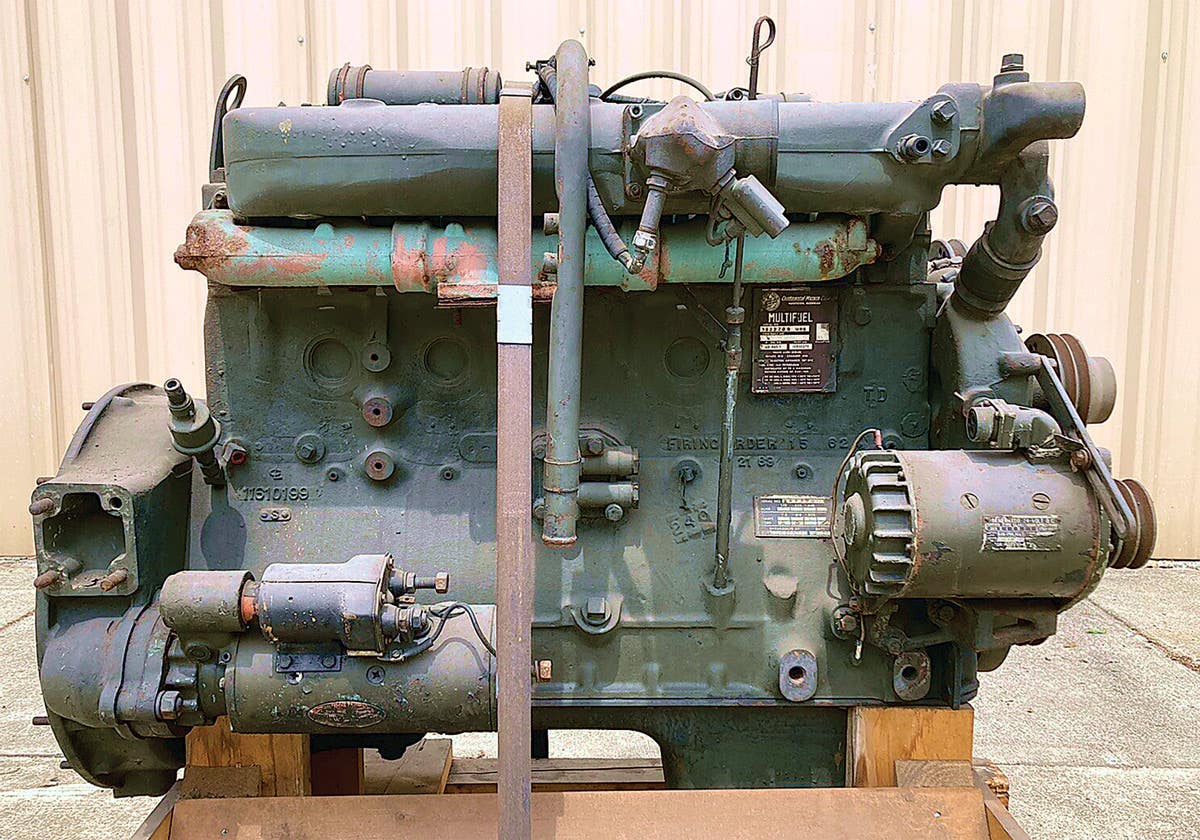A Military Vehicle “in a crate” You Really Can Buy
Jeep in a crate – probably not! Try a WWII Warbird.
“There are military jeeps for sale brand new in the crate from government stores that have been misplaced since WWII and are now being released for only $50. You just need to get on the list!” I have been hearing that story since being a kid around 1957. I think we all have heard the same tale and are still awaiting the discovery — and sale — of that “Mother Lode of Jeeps.”
During one of the Military Vehicle Preservation Association's convoys a few years ago, the “Jeep in a Crate” topic again surfaced when one of the public came out to see our historic military vehicles during a lunch break. Fellow convoyer, Daryl Bensinger, told the guy that “Jeeps in a crate” were no longer available, but that he could sell the gentleman all new parts in crates to build one. That caused more than a few grins around the picnic tables.
That one episode got me to thinking about the idea of military vehicles in crates. Even if a “jeep-in-the-crate” doesn’t exist, are there any other military-themed vehicles that are?
Crate Warbirds
Okay, so we all know that “jeeps-in-crates” don’t exist, but how about new, in-the-crate fighter planes? A phone call to veteran MVPA convoyers Michael and Diana O’Sullivan in Texas, produced some interesting details about this far-fetched idea.
First, let me share that Mike and Diana are known for convoying in unusual vehicles. On the 2012 Alaska Highway Convoy, for example, they drove a 1943 CMP Chevy. For the 2015 Bankhead Convoy, they drove a half-track more than 2,500 miles! And on the 2017 Route 66 Convoy, their ride was a 1957 Mercury 2-ton RAAF truck.
With all that said, Michael O’Sullivan is actually the CEO and owner of Supermarine Aircraft, LLC of Clyde, Texas (website: www.supermarineaircraft.com). Mike’s aircraft factory began manufacturing kit aircraft in 1992 and has been building and selling Spitfire kits for more than 20 years. For the past 15 years, they have been redeveloping engines and their own re-drive system for better engine performance.
The Mk26b kit is now a well-proven design with all aluminum components pre-drilled and precision cut using a computer-controlled CNC router cutter. This keeps parts standards consistent and accurate. The main structural sections of the aircraft are pre-built in factory jigs, thus ensuring the highest possible accuracy of these critical components. Mike says that the method of construction is aimed at the average person who is good with their hands. There are Supermarine Spitfire reproduction kit aircraft currently flying in the United States, Australia, New Zealand, United Kingdom, Germany, South Africa, and Canada.
The kits include color manuals. All components are prefabricated. The main spar is fabricated and assembled. The wing spars are fabricated and assembled. All control surfaces are fabricated and temporarily assembled. All of the hardware, nuts, bolts, rivets, is of aircraft grade. All completed components are corrosion-protected. The fuselage shell is ready for fit-out. The wings are pre-assembled, then disassembled for flat packing for shipment. Hydraulic undercarriage legs include alloy wheels and disc brakes.
Mike’s first kits were the Mk25 (at 75% size of the WWII aircraft) single seat aircraft. As word got around and as the market developed, Mike found a great desire for a two-seat aircraft, thus the model Mk26 — at 80% size of the WWII aircraft — was born. Demand from customers for a more comfort (more room in the cockpit) lead to the development of the Mk26b aircraft (90% scale) with the same performance of the earlier models. Due to demand for the Mk26b, the Mk 25 and Mk26 are no longer being produced.
The step-by-step assembly instructions are clear, concise, and easy to follow. However, Mike and his A&P certified crew are always available for any clarifications. Mike estimates that the average kit purchaser will need about 1,100 hours to complete the assembly.
Mark Sigrist (MS): Does your Spitfire Mk26b come “in a crate?”
Michael O’Sullivan (MO): Yes, the Spit does come in a huge wooden crate as did the original when shipped overseas. Everything comes in the big wooden crate, bar the instruments. The Engine comes in a separate crate.
MS: What type of equipment or tools are needed to assemble your Spitfire? Is there anything that would be uncommon to an enthusiastic mechanic?
MO: A well-equipped mechanic will have nearly all the tools required to assemble the Spit. An air compressor, rivet gun and a few sheet metal tools will be necessary.
MS: In addition to the aircraft kit and any accessories that you supply, are there additional items that need to be sourced to complete the Mk26b?
MO: The Spits come complete. For pilots, radios and instruments are pretty much a “personal preference” thing with wildly differing opinions. Therefore, these are not included in the package.
MS: Considering an assembly in the USA by a competent but a non-rated mechanic, are there required protocols that include the FAA or other governmental agency as the assembly progresses or at the conclusion to achieve “certification or permission” to fly the aircraft?
MO: After the Spitfire is built, it has an inspection by a Designated Airworthy Representative (D.A.R.).
MS: What type of licenses are required by the pilot to fly a completed project Spitfire?
MO: A private Light Aircraft. pilot license is all that is required.
MS: What is the projected time line for a person to order a MK26b Spitfire kit until your facility is ready to ship the order?
MO: Order time is 6-8 months.
MS: Do you only provide kits, or do you also contract to assemble completed aircraft?
MO: Current regulations allow us to build a “demonstrator” aircraft — one per year. We are not able to assemble aircraft for customers.
MS: The 2015 MVPA Bankhead Convoy participants were certainly impressed with our stop to tour your facilities in Texas and see one of your Spitfires put through its paces. Are you aware of any air shows or fly-ins upcoming in 2019 or 2020 where our readers can view your Supermarine Spitfires?
MS: The Spitfire could appear at any venue. Nearly every year Spits do attend the EAA Airventure Oshkosh International Air Show in Oshkosh, Wisconsin.
MO: Any last comments?
MS: The Supermarine Aircraft Spitfire is the only Spitfire kit in the world and is all-aluminum. Flying is very similar to the original, in all aspects. To date, we have built 102 Spitfires, and they are in every major country in the world.
BACK to the original question
We will have to keep searching to find that fabled original military vehicle in a crate — and certainly, we can guess that it will not be for sale for $50!
But we now know that we have the next best thing: That with desire, determination, and a good set of wrenches, we can assemble a warbird from components out of a crate.
*As an Amazon Associate, Military Trader / Military Vehicles earns from qualifying purchases.
Mark Sigrist was a US Army Vietnam Veteran and a retired USDA Forest Service Forester and Wildland Firefighter. He was a historic military convoy enthusiast who lived his dream in north central Idaho, sharing the land with abundant wildlife and very few neighbors. Unfortunately, our dear friend Mark passed away on 2 August 2020, after a courageous battle against cancer.







